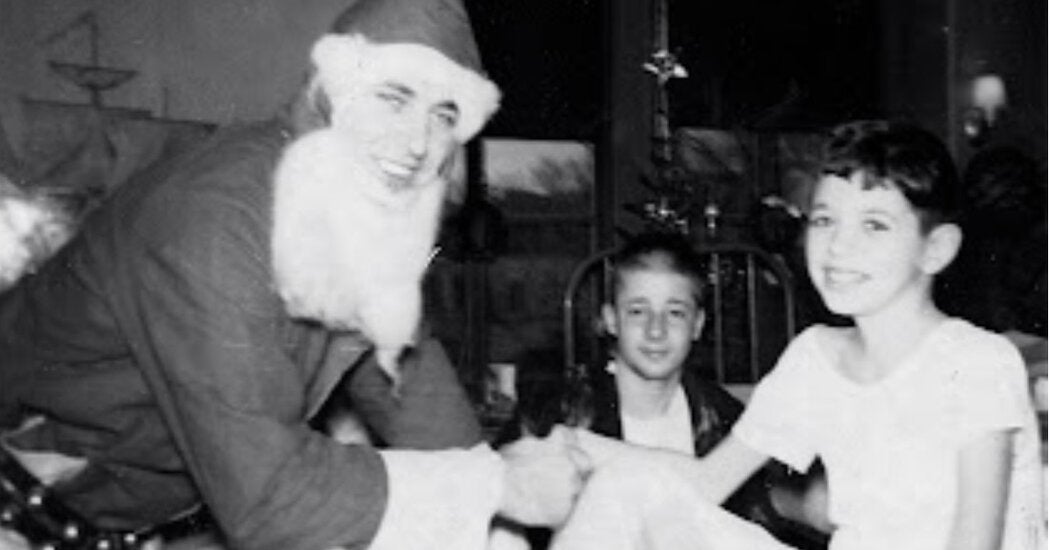
For 72 years, David Schacker has held on to a tattered black-and-white photograph, now buried deep in a closet at his home near downtown Toronto. A few days ago, shortly after Gil Hodges was elected to the Hall of Fame, he decided to take a fresh look. The image has lost some of its luster but the excitement still shines through: a bright-eyed kid, just one month shy of turning 11, beaming as he shakes hands with a local legend.
Hodges came to St. Giles hospital in December 1949 to visit a group of young boys who were recovering from polio. He arrived in a full Santa suit — complete with a beard, a hat and boots — but the disguise didn’t fool anyone. The boys had spent the past few months cooped up inside, huddled around a 12 ½ -inch Stromberg-Carlson television set. When they weren’t going through their daily physiotherapy, they were watching Brooklyn Dodgers games. And Hodges, who was voted into his first All-Star Game that year, played in 156 of them. They knew who he was the minute he walked through that door.
Hodges made his way over to Schacker and stuck out his hand. All these years later, Schacker still remembers how big the massive first baseman’s hand was — yet how gentle Hodges seemed close-up. This was an All-Star, a man who had just driven in 115 runs and knocked out 170 hits, and here he was, sitting on Schacker’s hospital bed in Crown Heights, beaming back at him.
To say it was a surreal experience would be an understatement. The previous few months had been a struggle for Schacker, who was a gifted tennis player and a speedy runner. Instead of smacking balls from the baseline or running through the streets of Bay Ridge, he found himself undergoing hours of daily physical therapy. It was not a 10-year-old’s idea of a good time. But from September 1949 until June 1950, it was his reality.
The Dodgers made those nine months bearable. Schacker had been a die-hard fan since 1946, raised on teams of Pete Reiser, Dixie Walker and Kirby Higbe. He had never owned a TV, so watching his favorite players hit and run and steal in real time was exhilarating. Though Hodges was just at the beginning of his Hall of Fame career, Schacker knew he was something special, and not only for his talent. This was a player who lived in Brooklyn year-round. The Dodgers’ first baseman could be seen walking his dog down the block. He could be seen at the corner store buying cigarettes, or stopping for milk on his way back from the ballpark. In many ways, Hodges felt like one of them: a neighbor, a familiar face, a friend.
